If you’re putting in some major cycling hours, then there’s no doubt that your body will be in need of a rest and some serious relief. But rather than soaking in a bath, holding ice packs to your aching thighs, or sitting on the couch, did you know one of the best ways to recuperate is to actually do more exercise?
Before you groan in horror, we should specify that the solution is a more gentle form of exercise. Yoga, to be precise.
While for many people the word conjures up images of meditating for hours, chanting ‘om’ and sitting in the lotus pose, the reality is quite different. More and more people, and athletes at all levels, are turning to yoga as a supplementary practice to prevent injury, improve flexibility, and enhance their everyday wellbeing.
Long hours spent in the saddle hunched over your handlebars, while great for improving your times, will result in muscle tightness and reduced flexibility. But don’t worry, yoga has your back. And your legs, and your joints, and your mental health too!
What are the benefits of practicing yoga?
To find out why yoga is so great for us, all we have to do is check the history books. Originating in India, people have been practicing yoga for more than 5,000 years.
This ancient form of exercise isn’t very strenuous, but it is renowned for helping develop your strength and flexibility, as well as your mental wellbeing. If you’re looking for both instant gratification and long-term benefits, then yoga is something that you should certainly explore. More often than not you’ll emerge from a class feeling relaxed and invigorated, and over time you’ll experience a lasting transformation in your body.
So we’ve established that yoga is good for you. But what are the exact benefits that you can expect from incorporating a practice into your cycling training regime?
Increased flexibility
Of course, yoga and flexibility go hand in hand but many people often cite a lack of flexibility as a reason not to practice yoga. But if you are a little stiff and struggle to touch your knees let alone your toes, then starting a regular practice may be exactly what you need.
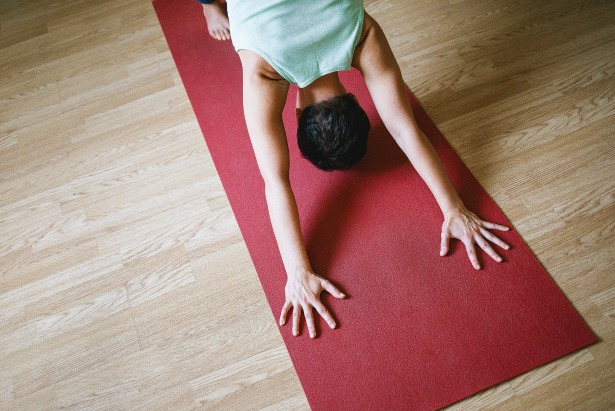
A body that is supple and flexible will be less prone to injury, as the level of physical stress that you can withstand is increased. It isn’t something that will happen overnight, but with regular practice you will start to notice a gradual loosening in your body, particularly in your hips and hamstrings. And as your flexibility starts to improve, you’ll find that your posture will too.
Strengthen your body
Thought yoga was easy? Think again. The act of holding and maintaining poses is a great way to build and strengthen your muscles, particularly in the core, arms and upper legs.
Holly McFee, founder of Leeds-based practice Yoga Hero, regularly hosts workshops specifically for cyclists, so is well-versed in the overall benefits:
“The benefits of yoga for cyclists include ensuring muscles and joints are strong, stable and supple, keeping the nervous system calm – especially for racers who will want to remain mindful throughout a cycle by being aware of any niggles in the body and any risks in the surrounding environment. Yoga can also help to reduce recovery time, which means getting back on the bike quicker and can help to reduce the risk of injury.”
Improve your joint health
While cycling is less stressful on your joints compared to other forms of exercise, such as running, you’re still bound to feel the effects of a hard ride in your knees and other areas. If this sounds like you, then yoga will certainly help.
Practicing yoga helps the production of synovial fluid in your system. Think of synovial fluid like oil on a hinge; it helps the joint move more freely and easily. Regular practice of yoga helps to encourage synovial fluid to move smoothly around your joints, allowing it to reach places in the body it might struggle to otherwise.
Your core
If you’ve ever been out on a long ride and started to feel a niggle in your lower back, then chances are the problem lies deep within your core – quite literally. While many people only think of their core when training to get rock hard six-pack abs, the truth is that your core sits at the epicentre of all human balance. So when you’re travelling at high speeds on two wheels, you need to make sure you stay on track.
All forms of yoga, whether it’s Hatha or Bikram, will focus a great deal on reinforcing the muscles around your spine, which not only protects these incredibly important bones, but it also improves your core. A strong core helps to improve your posture, which can alleviate pain in your neck, back and shoulders.
It also means developing more muscles in your upper body, which helps to keep your stability in check. This in turn means a lot less movement in your upper body, so all of your energy can be channeled into producing a smooth pedal stroke that you can maintain for long periods of time.
Top poses for strengthening your core…
- Plank
- Side Plank
- Boat Pose (Paripurna Navasana)
Keep a calm mind
Yoga isn’t just about stretching out your muscles, burning a few calories and strengthening your arms and legs. It gives your mind a complete workout as well as your body, incorporating unique breathing techniques to help you stay calm and focus the mind.
Cheryl MacDonald, yoga elder and founder of Yoga Bellies, tells us how this can translate into your cycling sessions:
“Yoga will help you feel calm. When you are in a particularly long ride you can calm your mind with your breath, like you do in your yoga practice, and use this to push through the pain. Remember the mindfulness you had in the resting poses and use your yoga training to connect your mind to your breath and relax into the saddle.”
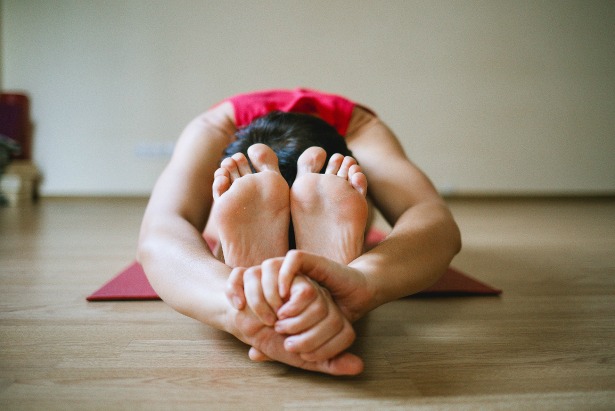
Learn how to breathe
How hard is it to breathe? After all, we do it naturally on a daily basis. But so much of our energy and focus comes just from the simple act of breathing in and out. Although it may feel like the last thing you want to do, taking deep slow breaths instead of quick short inhales can actually be far more beneficial. It’ll focus the mind and deliver more oxygen-enriched blood cells to the parts of your body that need it most during a hard road session.
Controlled breathing (known in yoga practice as pranayama) is a core part of any yoga practice as it helps to connect the mind and body together. Yoga encourages us to breathe deeply and into the diaphragm, as opposed to breathing into our upper chest which we do so often in our everyday lives. While this has become habitual, it is counterproductive as we actually expend more precious energy than we need to that could otherwise be sent to our muscles.
As you practice yoga, really focus on taking deep inhalations to lengthen your spine, and full long exhalations to stretch deeper into the pose. And then carry this with you into your cycling training and races.
Control your breathing, rather than letting it take control of you.
What are the top yoga poses for cyclists?
Now that we have covered some of the many benefits of incorporating a regular yoga practice into your training regime, we’re going to look at some of the poses that are going to help you and your training the most.
If you’re not experienced with yoga, then don’t try these at home without first learning how to do them properly! We recommend popping along to a nearby yoga class and asking a qualified teacher to help you. Yoga can be surprisingly tough, and the last thing you want is an injury that’ll take you off the road for a while! Listen to your body and always work within your limits.
There are dozens of different yoga positions for you to practice, but we have selected six which, when incorporated into your exercise regime, will bring the most benefits to your fitness and cycling training. So if you want to gain that competitive edge, take these poses for a test ride.
Downward-Facing Dog (Adho Mukha Svanasana)
Perhaps the most iconic and well-known of all yoga poses, downward-facing dog is considered to be an active resting pose. It’s a mild inversion, meaning that your heart is placed above your head, so is great for getting the blood flowing.
There are many benefits to stretching out in downward-facing dog; it’s a good all-round pose for alleviating numerous tight areas of the body including your calves, shoulders, hamstrings, arches of the feet and the hands. It is also a gentle strengthener for your arms and legs if you hold the posture for a number of breaths. Downward-facing dog is thought to help calm the brain, help with stress and energise the body – a great way to both start and end the day!
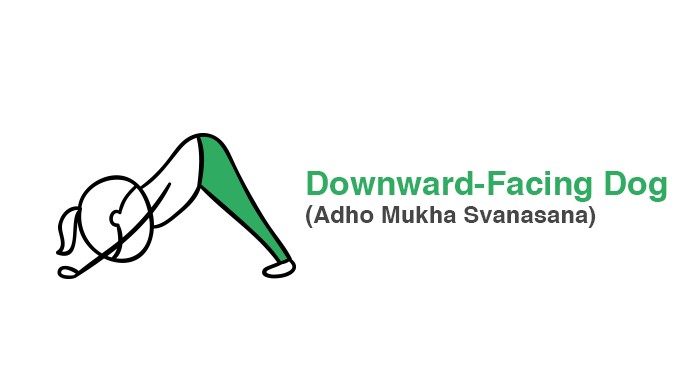
Holly from Yoga Hero gives us step-by-step instructions:
“A yoga favourite! Come to hands and knees, wrists aligned under the shoulders and knees aligned under the hips. Tuck your toes under and lift the hips up and back to bring you into an inverted ‘V’ shape.”
Lunge (Anjaneyasana)
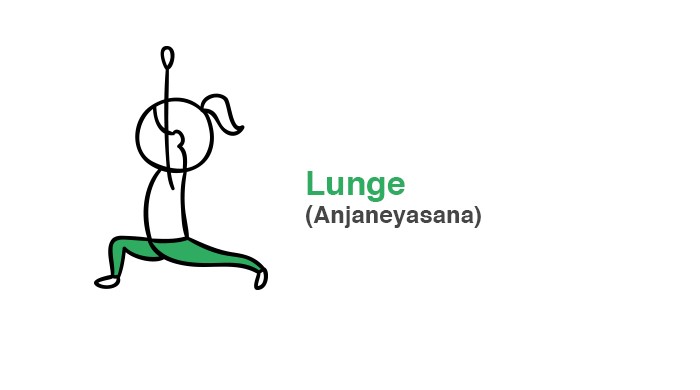
The Lunge is a strong pose, and not one to be taken lightly. It is a great stretcher for your hips, and this is where you’ll definitely feel the benefits, but it does so much more for your body. It also helps to expand your lungs and chest, and open up those shoulders. You’ll find an improvement in your balance, concentration and awareness of your core, and it’ll also strengthen your glute and quad muscles.
Holly talks us through it:
“An intense but very therapeutic pose. Come to hands and knees, and step your right foot where your right hand is – you might have to take hold of the ankle and guide it up the mat a bit! Press the right foot down into the mat and imagine you’re trying to drag the foot backwards along the mat. Your left knee remains on the floor, left toes tucked under or on top of the foot flat to the floor; that’s up to you. Pad under the left knee if required, but activate the leg as though you’re trying to draw it forwards. The action of drawing the legs towards each other keeps us from dropping into the hips and accidentally over-stretching.
“Hands can come to the mat, or your front right thigh, or raised above your head depending on your energy levels. Stay for five breaths, keeping lower abdominal muscles and the legs engaged, before repeating on the other side.”
Seated Forward Bend (Paschimottanasana)
Performing a Seated Forward Bend is a basic yoga pose that is great for stretching out the hamstrings as well as helping to ease the lower back and spine. Don’t be alarmed by the images of people lying flat along their legs; yoga is all about working within the limits of your own body. It’s certainly not a competition.
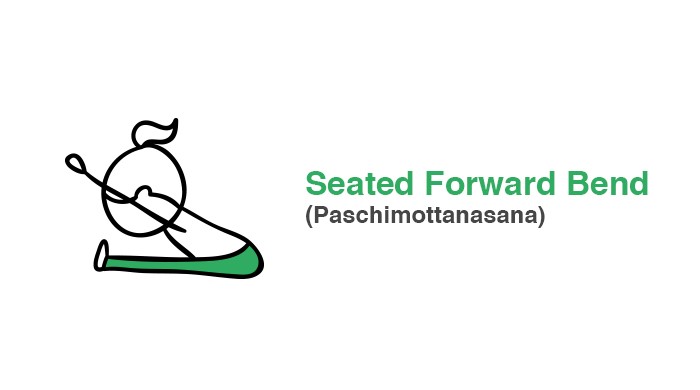
So how do you do a Seated Forward Bend?
Sit upright with your legs straight out in front of you. Take a long deep inhale and at the same time raise your arms up and over your head. Lift the ribcage and stretch up through the fingertips.
Start to exhale and bend forward at the hips. Slowly lower your torso down towards the legs as far as you can, reaching your hands towards your feet.
Bridge Pose (Setu Bandha Sarvangasana)
Let’s stretch those hip flexors and spine! After long hours in the saddle, your major joints can start to stiffen up, and bridge pose is the perfect way to alleviate that pressure. Holding bridge can also help to stretch out your chest, neck and back, rejuvenate tired legs, as well as calming the brain and reducing anxiety!
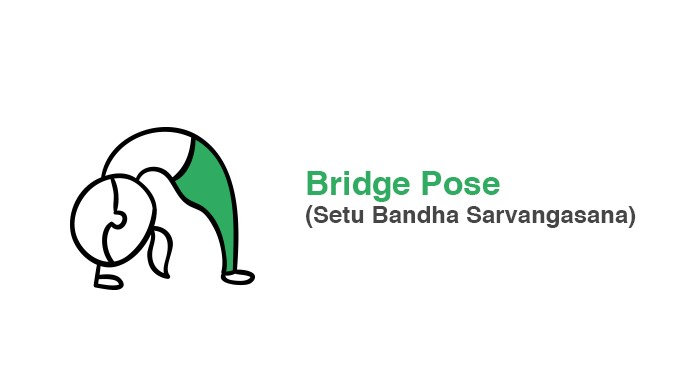
Here’s how to cross that bridge…
- Lie flat on your back. Bend your knees and place your feet flat on the floor hip-distance apart, with heels as close to your sitting bones as possible.
- On the exhale, press into your feet and push your tailbone up, lifting your sitting bones until the thighs are parallel to the floor.
- Lift the spine and navel towards the ceiling and your chest should follow until you are resting on your shoulders.
- Stay in the pose for 30 seconds to one minute, inhaling and exhaling steadily. When you are ready to come out of the pose, lower your spine to the floor on an exhale.
Standing Forward Bend (Uttanasana)
A nice easy pose that brings tremendous benefits to your legs and lower body. As a cyclist, your quads, calves and hips will get tight; standing forward bend allows you to stretch them out at your own pace and can easily be adjusted depending on your flexibility. Its other benefits include strengthening the knees and thighs, reducing anxiety and fatigue, and helping to calm the brain and relieve stress.

Holly from Yoga Hero explains:
“Simply, stand with feet about hip distance apart and fold forward, engaging the lower abdominals to protect the lower spine. I’d recommend bending legs so that hands can rest on the floor, or put hands onto a yoga block / a book / a box / something that is steady, as bent legs for a gentle stretch are much, much better than pulling at tight hamstrings and risking injury.
“Allow the head to hang, which allows the neck muscles to relax and soothes the nervous system, all the while the back of the legs stretch out gently.”
Corpse Pose (Savasana)
If you already consider yourself a yogi, then chances are this will be one of your favourite poses. For those who are new to the practice of yoga, Savasana is a restorative pose that involves lying flat on your mat, legs and arms to the side with your palms facing up, and eyes closed. That’s it.

Believe it or not, Savasana is possibly the hardest yoga pose that you will ever come across. It requires you to be awake yet completely relaxed, and can have powerful benefits on your mental state and the recovery of your body. The trickiest part is controlling the mind, keeping it in the moment rather than letting it wander off to thoughts of the future and to-do lists.
Try and stay in Savasana for as long as you can. 10 to 20 minutes is ideal but even a few minutes will help you. It’s all about giving the body the rest it deserves without dozing off!
Yoga can help to transform your cycling training and take you further than you ever thought possible. Not only does it give your tight muscles the rest and relief that they deserve, but it also has tremendous mental benefits. Just by stepping onto your yoga mat a few times a week, you’ll start to notice a mind-body and breath connection that helps to keep you calm, relaxed and focused on those long rides.
Whether you’re an amateur or a professional, a tourer or a racer, this ancient form of exercise is the perfect partner to your bike. Stretching isn’t just something you have to do for five minutes before your workout; yoga takes it to the next level by giving you benefits all over your body. So whether you plan to practice in your off-season, or take to the mat two or three times a week, we guarantee that you’ll have found your next cycling secret weapon.
